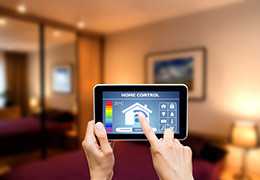In today's modern world, where technology is constantly advancing and our energy resources are limited, it has become crucial for individuals and businesses alike to monitor and manage their energy consumption. This not only helps in reducing energy bills, but also contributes towards a more sustainable future. One of the most effective ways to monitor energy usage is through the use of energy monitoring plugs. These smart plugs are designed to provide real-time data on energy usage, helping users to make informed decisions about their energy consumption. However, with a wide range of energy monitoring plugs available in the market, choosing the right one can be a daunting task. In this article, we will explore the key factors to consider when selecting an energy monitoring plug, as well as some of the top options available in the market. Whether you are a homeowner looking to reduce your energy bills or a business owner wanting to track your energy usage, this guide will help you make an informed decision and choose the right plug for your energy monitoring needs.
Understand your energy usage needs.
To effectively choose the right plug for energy monitoring, it is crucial to have a clear understanding of your energy usage needs. This requires analyzing your daily routines, activities, and appliances used within your home or workplace. Take note of the devices that consume the most energy and the patterns of their usage throughout the day. Are there any appliances or electronics that are consistently left on when not in use? By assessing your energy consumption habits, you can identify areas where energy is being wasted or find opportunities for optimization. Understanding your energy usage needs is the first step towards making informed decisions and implementing effective energy monitoring solutions.
Consider the type of outlet.
When considering the type of outlet for your energy monitoring needs, it is important to take into account the specific requirements of your monitoring system. Different energy monitoring devices may have compatibility constraints and require specific types of outlets to function optimally. For example, some systems may require a standard electrical outlet, while others may require a specialized outlet or the use of smart plugs. Additionally, you should consider the location of the outlet and whether it is easily accessible for installation and monitoring purposes. By carefully considering the type of outlet that best suits your energy monitoring system, you can ensure seamless integration and accurate tracking of your energy consumption.
Look for compatibility features.
To ensure a seamless and efficient energy monitoring experience, it is essential to look for compatibility features when choosing the right plug. Compatibility features refer to the ability of the plug to work harmoniously with your energy monitoring system. This includes compatibility with different communication protocols, such as Wi-Fi, Zigbee, or Z-Wave, which are commonly used in smart home automation. Additionally, compatibility features may extend to the ability of the plug to integrate with popular energy monitoring platforms or apps, allowing you to easily monitor and analyze your energy consumption data. By selecting a plug with robust compatibility features, you can ensure that your energy monitoring system operates smoothly and provides accurate insights into your energy usage.
Evaluate data transfer capabilities.
When evaluating data transfer capabilities for energy monitoring plugs, it is important to consider factors such as speed, reliability, and security. The speed of data transfer determines how quickly energy consumption data is transmitted from the plug to the monitoring system, allowing for real-time monitoring and analysis. Reliability ensures that the data is consistently and accurately transferred without any interruptions or data loss. Additionally, prioritizing the security of data transfer is crucial to protect sensitive information from unauthorized access or breaches. By carefully evaluating the data transfer capabilities of different plugs, you can choose the one that meets your requirements for efficient and secure energy monitoring.
Factor in cost and brand.
To make an informed decision when choosing the right plug for energy monitoring, it is essential to factor in cost and brand. Cost plays a significant role in determining the overall budget for your energy monitoring system. It is important to consider not just the upfront cost of the plug, but also any additional fees or subscription charges that may be associated with the monitoring software or services. Furthermore, brand reputation should not be overlooked. Established and reputable brands often offer reliable and high-quality products that have been tested and proven in the market. Additionally, choosing a well-known brand can provide assurance in terms of customer support and warranty coverage. Taking into account both cost and brand will help you select a plug for energy monitoring that strikes the right balance between affordability and reliability.
In conclusion, choosing the right plug for energy monitoring is a crucial decision for any household or business looking to track and manage their energy usage. By considering factors such as compatibility, accuracy, and user-friendly features, one can select a plug that best fits their needs and budget. With the growing importance of energy efficiency and sustainability, investing in a reliable energy monitoring plug can not only save money but also contribute towards a greener future. Make an informed decision and reap the benefits of efficient energy management with the right plug.
 Beyond Convenience: How Smart Devices Can Enhance Home Security03/28/2024Posted in: GuideRead more
Beyond Convenience: How Smart Devices Can Enhance Home Security03/28/2024Posted in: GuideRead more The Ultimate Smart Home Starter Kit: Must-Haves for Beginners (Affordability Edition)03/28/2024Posted in: GuideRead more
The Ultimate Smart Home Starter Kit: Must-Haves for Beginners (Affordability Edition)03/28/2024Posted in: GuideRead more Illuminate Your Life: Home Lighting Automation Explained03/28/2024Posted in: Smart HomeRead more
Illuminate Your Life: Home Lighting Automation Explained03/28/2024Posted in: Smart HomeRead more
 Enhance Your Home Security with a Smart Lock: The Ultimate Guide03/28/2024Posted in: Smart HomeRead more
Enhance Your Home Security with a Smart Lock: The Ultimate Guide03/28/2024Posted in: Smart HomeRead more
 The Ultimate Guide to Home Automation Hubs02/12/2024Posted in: Smart HomeHome automation...Read more
The Ultimate Guide to Home Automation Hubs02/12/2024Posted in: Smart HomeHome automation...Read more Enhance Your Security: Smart Home Solutions02/12/2024Posted in: Smart HomeIn today's...Read more
Enhance Your Security: Smart Home Solutions02/12/2024Posted in: Smart HomeIn today's...Read more Smart Light Compatibility: Ensuring Seamless Integration02/12/2024Posted in: Smart LightingIn the realm of...Read more
Smart Light Compatibility: Ensuring Seamless Integration02/12/2024Posted in: Smart LightingIn the realm of...Read more
 Beyond Convenience: How Smart Devices Can Enhance Home Security03/28/2024Posted in: GuideSmart home...Read more
Beyond Convenience: How Smart Devices Can Enhance Home Security03/28/2024Posted in: GuideSmart home...Read more The Ultimate Smart Home Starter Kit: Must-Haves for Beginners (Affordability Edition)03/28/2024Posted in: GuideTurn your home...Read more
The Ultimate Smart Home Starter Kit: Must-Haves for Beginners (Affordability Edition)03/28/2024Posted in: GuideTurn your home...Read more Illuminate Your Life: Home Lighting Automation Explained03/28/2024Posted in: Smart HomeThis guide...Read more
Illuminate Your Life: Home Lighting Automation Explained03/28/2024Posted in: Smart HomeThis guide...Read more
 Enhance Your Home Security with a Smart Lock: The Ultimate Guide03/28/2024Posted in: Smart HomeThis guide...Read more
Enhance Your Home Security with a Smart Lock: The Ultimate Guide03/28/2024Posted in: Smart HomeThis guide...Read more




Leave a comment